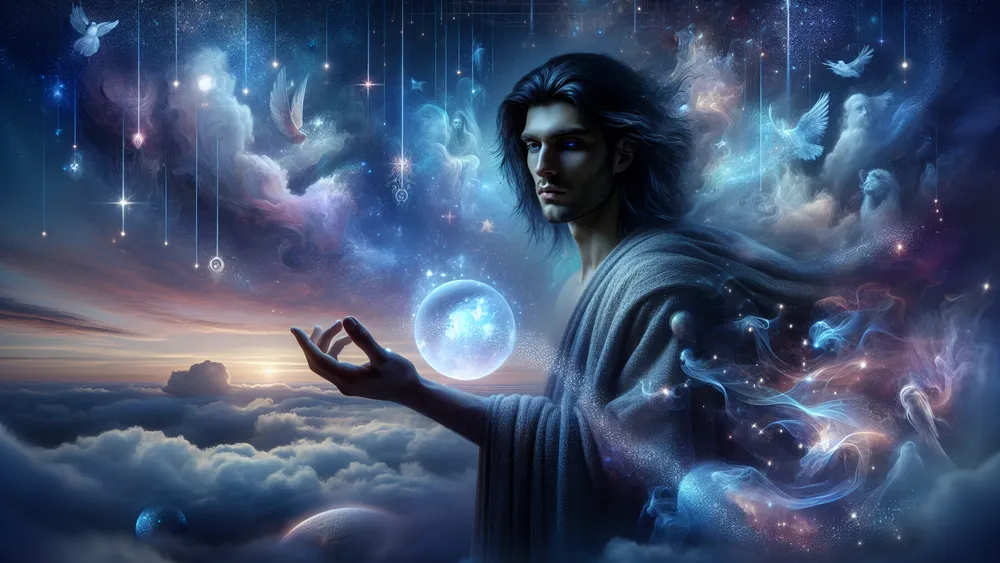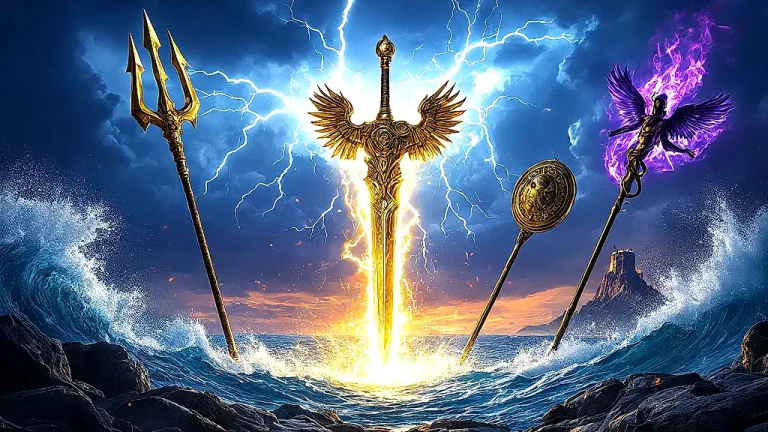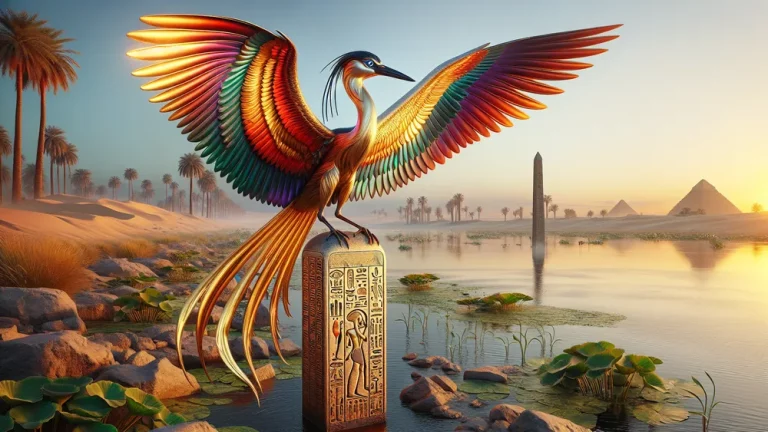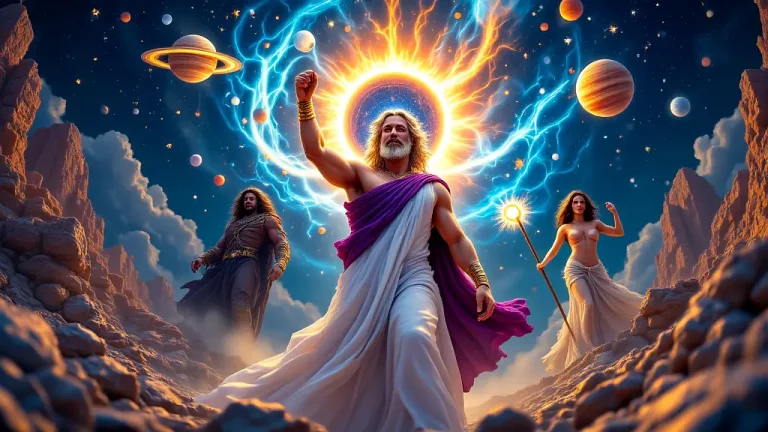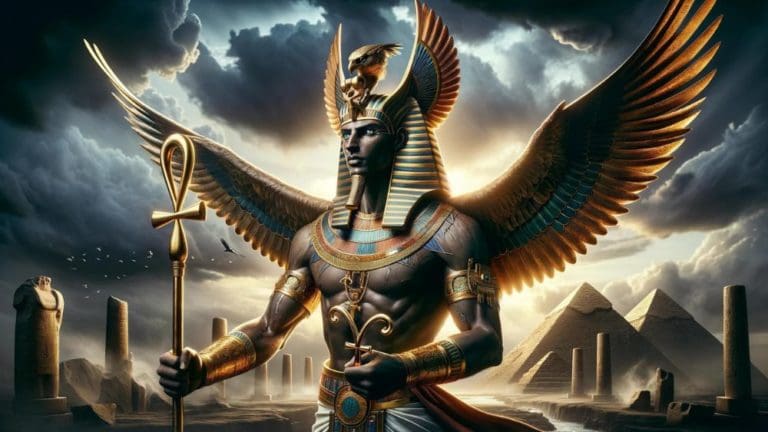Morpheus: Greek God Of Dreams And Shaper Of Human Sleep
Do you ever think about who runs the world of dreams, those strange and often imaginative experiences we all encounter in our sleep? To the Greeks, Morpheus was thought to be in charge of this. Imagine Morpheus creating images in your mind while you sleep. Just like a director in a movie, Morpheus controls and makes the dreams that come to us every night.
Key Points:
- Morpheus is the Greek god of dreams.
- He is the son of Hypnos and Pasithea.
- Morpheus can take any human form in dreams.
- He delivers messages from the gods through dreams.
- His brothers are Phobetor and Phantasos, who focus on nightmares and illusions.
- Morpheus connects the divine and human worlds.
- He appears in ancient texts like Ovid’s Metamorphoses.
This blog post will take a deep jump into the interesting world of Morpheus, looking into where he came from, who his family was, what powers he had, and how he appears in ancient stories and art. Whether you’re new to mythology or know a lot about it, stick with us as we find out the secrets of the Greek god who makes our dreams and affects our sleep.
Morpheus: Overview and Key Facts
| Key Point | Description |
|---|---|
| Name | Morpheus |
| Role | Dream God |
| Parentage | Morpheus is the child of Hypnos (Sleep) and Pasithea (Relaxation) |
| Siblings | Includes Phobetor (God of Nightmares) and Phantasos (God of Illusions) |
| Domain | In charge of dreams and the mind |
| Powers | Can shape and manage dreams, appear in any human form within dreams, and deliver messages from gods through dreams |
| Symbolism | Stands for creativity, prophecy, the mind, and the link between human and godly worlds |
| Mythological References | Often talked about in old stories, especially in Ovid’s “Metamorphoses” |
| Cultural Impact | Influenced old Greek thoughts on dreams as messages from gods, and remains a symbol of the mysterious and creative parts of the mind today |
| Artistic Depictions | Often appears in old art as a winged figure or a young man, representing his airy look and changing nature |
Where Morpheus Comes From
To really get Morpheus, we need to look into his beginnings and what stories say about him. Digging into his family background and his part among other gods, it’s interesting. Considering his family and place in mythology helps us understand more.
Morpheus in Greek Myths
Think about being in a family where everyone had a special part to play in dreams. Morpheus, in Greek mythology, fits right in as a critical member of a divine family tied to sleep and dreams. He is Hypnos’s son, the god who brings sleep to humans and gods alike.
Hypnos, usually pictured as a kind figure, lulls everyone to sleep with a gentle touch. Morpheus takes over his father’s area, shaping and creating dreams, making him vital in the dream world. Pasithea, his mother and the goddess of relaxation, adds to the calm and peaceful nature of his background. Within the larger Greek gods’ world, Morpheus has a special role.
While gods like Zeus and Athena deal with big things in the world and human life, Morpheus works in the personal space of the mind. Consider him a great storyteller who visits you each night, creating detailed stories and bringing messages from the gods through dreams. This role makes him a critical link between the gods and humans, connecting them through dreams.
His power to appear as any person in dreams allows him to deliver these godly messages in a way that is clear and powerful to the dreamer.
Morpheus is an important figure in Greek mythology who shapes dreams and connects gods to humans by delivering messages through personal dream stories.
The Sleepy Family
Morpheus is part of an interesting family of gods, each having their own special job in the world of sleep and dreams. Think of them as a specialized team, each person adding to the overall feeling of sleep. Here’s more about his family:
- Hypnos (Sleep): Morpheus’s father is Hypnos, the god of sleep. Imagine Hypnos as the gentle force that means rest and calm for both humans and gods, making sure everyone gets the rest needed.
- Thanatos (Death): Thanatos, who is Morpheus’s twin brother, means death. While his job might seem grim, he is the natural opposite to Hypnos, standing for the never-ending sleep that comes after life.
- The Oneiroi (Dreams): Morpheus is one of the Oneiroi, a group of dream spirits. His brothers, Phobetor and Phantasos, are also in this group. Phobetor makes nightmares, bringing scary dreams, while Phantasos creates illusions and fantastic dreams. Together, they take care of all parts of the dream world, from calm to frightening.
What Morpheus Does and His Powers
Considering we’ve already discussed Morpheus’s beginnings and family, let’s now look into what he specifically does and the special powers he has in the world of dreams.
The Dream Maker
Think of Morpheus as a skilled creator of nightly plays, where your mind is the stage and the parts he takes are the actors. As the dream maker, Morpheus can shape dreams for people. His main job is to send messages from the gods. To do this well, he can take any human form.
This lets him seem like someone familiar in dreams, making the messages from the gods more understandable and impactful. A skilled storyteller, he uses dreams to share complex ideas and prophecies in ways that deeply connect with the dreamer. In Greek myths, Morpheus’s talent for turning into different people isn’t just about his power. It’s a sign of how important he is.
By looking like various humans in dreams, he acts as a key link between gods and people, making sure their will and advice reach those who need it. For instance, if a god needed to warn a king about danger, Morpheus might look like a trusted advisor in the king’s dream, giving the warning in a way the king would follow.
This ability to change and adapt inside dreams makes Morpheus a crucial figure in Greek myths, connecting the divine and human through dreams.

What Morpheus Represents
Morpheus is seen as the example of the creative and mysterious aspects of the human mind. He means not only the skill in making dreams but also the deeper, often hidden layers of the subconscious. Morpheus’s ability to shape dreams and give predictive messages ties him to the world of prophecy, where dreams are like windows into what will happen or the will of the gods.
Think of him as a bridge between the conscious and subconscious, where he draws from the source of new ideas and intuition that lies below our waking thoughts. This makes Morpheus a strong symbol of imagination, the unknown, and the mystical processes that guide our inner lives.

How Morpheus Affects Our Sleep
Picture Morpheus as the leader of a group, where each part means a different aspect of sleep and dreaming. He affects our sleep cycles, guiding us through stages and makes sure that dreams fit smoothly into our rest. In ancient times, people thought that dreams were more than random pictures; they were messages from the gods, coming through sleep.
Morpheus, who can shape and direct these dreams, had a key role in this holy communication. He is like a messenger, making sure the gods’ words reach the dreamer in a way they can understand and act on. Within Greek mythology, dreams were often seen as predictions, offering a look into the future or divine will.
Morpheus’s role was to help this process, making sure dreams carried the right messages from the gods. For example, if a god needed to warn a hero about danger, Morpheus would create a dream that gave this warning in a symbolic but clear way.
This belief in the divine nature of dreams highlights the importance of Morpheus in ancient Greek culture, where he served as a vital link between mortals and the gods, guiding the dreamer through a world of symbols and messages that could shape their waking lives.

Morpheus in Old Writings
After we looked at how Morpheus affects sleep and dreams, now let’s see his places in old texts and ancient pictures.
Showing Up in Classical Stories
Ovid’s “Metamorphoses” clearly shows Morpheus as the god of dreams who can take any human form to send messages from the gods. A key example is the story of Alcyone and Ceyx. Morpheus comes into Alcyone’s dream to tell her about her husband’s death. Think of him as an actor who goes into Alcyone’s subconscious, acting as Ceyx to give the sad news in a way she would understand.

This description underscores Morpheus’s role as a kind middleman, making sure the divine message has the right emotional impact. Another literary mention of Morpheus is found in the writings of Roman poet Statius. In his epic, “Thebaid,” Morpheus is one of the Oneiroi, the dream people, serving the god of sleep, Hypnos. Here, Morpheus brings dreams to humans, shaping their night visions to follow the gods’ will.
Think of him as a careful worker, making each dream to match the divine orders. These important literary depictions highlight Morpheus’s role in old mythology, where he connects the gods with humans through dreams.
Morpheus is the dream god who takes human forms to convey divine messages, like when he appears in Alcyone’s dream to inform her of her husband’s death.
Morpheus in Ancient Art
Think about looking at an ancient vase and seeing Morpheus as a calm figure with wings. This shows he can move fast through the dream world. Notable artworks with Morpheus include:
- The Hypnos and Thanatos Vase: This old Greek vase has Morpheus with his father Hypnos and brother Thanatos. It shows his place within the family of sleep and death deities.
- Roman Sarcophagi: Many Roman sarcophagi have carvings of Morpheus. He is often seen lying down and holding a poppy, a sign of sleep and dreams.
- Frescoes from Pompeii: Frescoes in Pompeii show Morpheus as a young figure. This means his link to dreams and the subconscious.
These artworks reveal that the ancients saw Morpheus as a kind and gentle figure, important to their ideas about sleep and dreams. They give a visual story that goes with the old writings, helping us understand how dreams were seen as a connection between humans and gods.
Morpheus Compared to Other Myth Stories
After we looked at Morpheus’s role in old writings and ancient pictures, let’s see how he stacks up against other mythological characters linked with dreams.
Morpheus and His Dreamy Brothers
Think of Morpheus as the expert of human dreams, the one who can take any human form and give messages from the gods. His brothers, Phobetor and Phantasos, also have important jobs in the world of dreams but focus on different parts. Phobetor, whose name means “frightener,” is responsible for making nightmares and dreams with animals. Imagine him as the director of a horror film, making scenes to cause fear.
On the other hand, Phantasos specializes in dreams with lifeless objects and strange landscapes, like a surrealist artist making clear and odd pictures in the mind. Together, Morpheus, Phobetor, and Phantasos cover the whole range of human dreaming. Morpheus brings clarity and messages, often seeming as a human to make the dreams relatable and understandable.

Phobetor brings fear and the basic parts of the subconscious, while Phantasos adds creativity and the weird, filling dreams with odd and wonderful imagery. Working together, they make sure that the dream world is as rich and varied as the waking world, each adding their unique touch to the picture of human sleep.
Dream Gods in Different Cultures
Imagine Morpheus as the manager of dreams, making human dreams with care and purpose. Now, think of the Egyptian god Bes, who, unlike Morpheus, is not only a dream god but also a guardian of homes, mostly for mothers and children. Bes is often seen as a dwarf with lion-like features, which means he protects strongly.
While Morpheus shapes dreams to give messages from the gods, Bes uses his power to keep away evil spirits and ensure good sleep, which means he protects, a feature that Morpheus does not usually have. Similarly, the Norse god Baldr, known for his beauty and fairness, also connects to dreams, mainly prophetic ones.

Baldr’s dreams are important in Norse stories because they predict his own death, a key event in the tales. Unlike Morpheus, who can take any human form to give messages, Baldr’s dreams mean warnings and prophecy. This difference means how various cultures give their dream gods unique features and roles, which means their unique values and beliefs.
| Deity | Culture | Role in Dreams | Symbolism |
|---|---|---|---|
| Morpheus | Greek | Maker of human dreams, messenger | Human forms, clarity, messages |
| Bes | Egyptian | Guardian of sleep, keeps evil away | Dwarf with lion features, protection |
| Baldr | Norse | Prophetic dreams, warnings | Beauty, fairness, prophecy |
The Pantheon of Greek Mythology Gods
Imagine the Greek group as a big and complex family, each one having their own special job and area. This holy gathering has big gods like Zeus, the king of the gods, and Hera, the queen, also including many other gods who manage different parts of nature and human life.
To fully get all the Greek gods and goddesses, you can check this full list with all Greek Gods. This detailed list that gives information about each god, their stories, and what they mean in Greek myths.
FAQs
1. Who are Morpheus’s parents?
Morpheus’s parents are Hypnos, the god of sleep, and Pasithea, the goddess of relaxation.
2. What is the significance of Morpheus’s name?
The significance of Morpheus’s name lies in its meaning, “form” or “shape,” which relates to his ability to shape dreams.
3. How did ancient Greeks interpret dreams?
Ancient Greeks interpreted dreams as messages from the gods, often facilitated by Morpheus.
4. Are there any famous myths involving Morpheus?
Famous myths involving Morpheus include his appearance in Ovid’s “Metamorphoses,” where he shapes dreams to convey messages from the gods.

